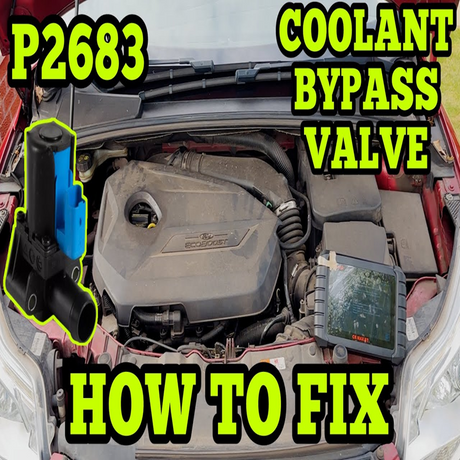OBD-II Code P2018: Intake Manifold Runner Position Sensor/Switch Circuit – Causes, Symptoms, Fixes & How iCarsoft Helps
When your car triggers a P2018 code, it indicates a problem with the Intake Manifold Runner Position Sensor/Switch Circuit (Bank 1). This fault often activates the check engine light and may cause reduced power, hesitation during acceleration, rough idle, or lowered fuel efficiency. In modern engines, the intake manifold runner system is critical for balancing airflow and improving combustion efficiency. When the sensor or actuator fails, drivability suffers. In this article, we’ll break down what P2018 means, the most common causes, how much repairs typically cost, and why advanced diagnostic tools like the iCarsoft CR MAX are essential for pinpointing the exact issue.
❓ What does code P2018 mean?
Answer: OBD-II trouble code P2018 points to a malfunction in the Intake Manifold Runner Position Sensor/Switch Circuit. This circuit helps the engine control module (ECM) monitor the position of the intake runner flaps, which open and close to optimize air delivery to the engine. If the sensor signal falls outside of the expected range or doesn’t match the commanded position, the ECM triggers P2018.
Evidence: According to Audi and Volkswagen factory service manuals, P2018 is often related to flap motor position sensors becoming contaminated with carbon buildup. The National Highway Traffic Safety Administration (NHTSA) has recorded several technical service bulletins (TSBs) addressing intake manifold runner failures in VW and Audi 2.0T and 3.2L engines. BMW and Mercedes-Benz have also reported similar issues in engines using variable intake runner technology.
❓ What causes code P2018?
- Carbon buildup in the intake manifold, preventing flaps from opening or closing correctly
- Defective intake manifold runner position sensor giving incorrect feedback to the ECM
- Failed actuator motor unable to move the intake flaps
- Broken or sticking intake runner flap due to wear or debris
- Wiring harness faults, such as short circuits, corroded connectors, or damaged insulation
- ECM calibration/software issues requiring a reflash or update
⚡ Common Causes & Estimated Repair Costs
| Cause | Estimated Repair Cost (USD) |
|---|---|
| Carbon buildup cleaning (intake manifold service) | $200 – $600 |
| Replace intake manifold runner position sensor | $150 – $400 |
| Replace intake runner flap actuator/motor | $300 – $800 |
| Repair or replace damaged wiring harness | $100 – $300 |
| ECM software update or reprogramming | $120 – $250 |
| Full intake manifold replacement (if flaps break) | $700 – $1,500+ |
🔧 How iCarsoft CR MAX Helps Diagnose P2018
The iCarsoft CR MAX scanner provides professional-level diagnostics at a fraction of dealership costs. When dealing with code P2018, it can:
- Read & clear P2018 and all related manufacturer-specific trouble codes
- Run actuator tests on intake manifold runner motors to confirm mechanical movement
- Show real-time live data such as runner position voltage, actuator command signals, and airflow metrics

- Access advanced functions including adaptation resets, TSB lookup, and freeze-frame data
- Support 40+ vehicle brands including Volkswagen, Audi, BMW, Mercedes-Benz, Ford, Toyota, Honda, and more
Pro tip: Always use live data from your iCarsoft CR MAX before replacing parts. For example, if the flap motor receives a command but shows no position change, the actuator is likely faulty. If the voltage signal is erratic, the sensor or wiring is more likely at fault.
❓ FAQ: Code P2018
Q: Can I continue driving with code P2018?
A: While the vehicle may remain drivable, prolonged operation with P2018 can reduce power output, lower fuel efficiency, and cause long-term engine stress. Addressing the issue quickly helps prevent costly intake manifold replacements.
Q: Which car brands are most commonly affected by P2018?
A: P2018 is most frequently seen on Volkswagen and Audi engines, particularly the 2.0T TFSI, 3.2L V6, and certain 3.6L VR6 engines. However, similar faults appear on BMW’s N52 and Mercedes M272 engines, as well as Ford’s Duratec V6 with variable intake runners.
Q: Can intake cleaning solve P2018 without replacing parts?
A: Yes. If the intake flaps are stuck due to carbon buildup, a professional intake cleaning service may restore proper operation. In many VW/Audi cases, walnut blasting or chemical cleaning has resolved the issue without part replacement.
Q: Will a basic OBD-II scanner detect P2018?
A: Basic scanners can read the P2018 code, but they cannot perform detailed actuator tests or display live intake runner data. Advanced scanners like iCarsoft CR MAX provide brand-specific diagnostics to avoid guesswork.
Q: Is replacing the entire intake manifold necessary for P2018?
A: Not always. Some vehicles allow the replacement of the actuator motor or sensor separately. However, in many VW/Audi engines, the manifold design integrates the flaps, meaning the entire intake manifold must be replaced if they break or seize.
Q: Does P2018 affect fuel economy significantly?
A: Yes. Since the intake manifold runner system optimizes airflow at different RPM ranges, a failure can reduce fuel combustion efficiency, leading to noticeable MPG loss.
Q: Are there any recalls related to P2018?
A: While not always a recall, many technical service bulletins (TSBs) from VW and Audi address intake runner issues and recommend updated parts or ECM software reprogramming to prevent recurrence.












